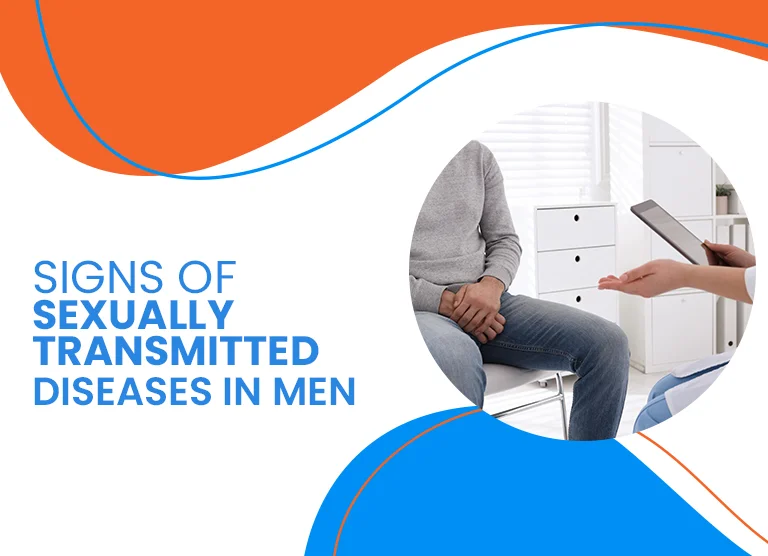
Monday to Friday 9:00 AM - 6:00 PM
Saturday to Sunday 10:00 AM - 2:00 PM
 Book Appointment
Book Appointment

Monday to Friday 9:00 AM - 6:00 PM
Saturday to Sunday 10:00 AM - 2:00 PM
 Book Appointment
Book Appointment

Do you suspect that you have contracted a sexually transmitted disease or STD recently? With different symptoms, it can be difficult to identify whether you already have an STI.
Signs of an STI can be different for a man and a woman. This blog post discusses common indications and how they can overlap in various STIs.
Like sexual health, anatomy is not straightforward, for instance, there are males who are cisgender and there are transgender men. The former are those men whose identity matches the one they were assigned at birth and the latter are those whose gender identity is not the same as they were assigned at birth.
Cisgender men generally have a penis and a scrotum. Other key internal elements that complete the reproductive system are:
Transgender men have different anatomy in comparison to cisgender men and that sometimes includes a vulva. Some parts of vulva are:
Both cisgender and transgender men will have an anus, mons pubis and perineum.
A sexually transmitted disease can spread during sexual activity to include – anal, oral and vaginal sex. Some common STDs are – chlamydia, gonorrhoea, herpes, syphilis and hepatitis c.
Common signs of STD in men include the following:
These symptoms may indicate you have an STI. It is also common to have a combination of symptoms like painful urination as well as unusual discharge or a skin rash.
An STI incubation period is the time between when you contract an STI to when the symptoms occur. You need to seek medical attention if you have symptoms such as painful urination or unusual pain or lumps and bumps.
As STI symptoms are usually localised to the mouth or genitals, it is common for various symptoms to appear at the same time. For example, in gonorrhoea:
Though some people suffer from one or more of these symptoms, others will not notice any signs of the infection at all.
Since STD symptoms are quite similar, testing is necessary for thorough diagnosis and treatment. Even if you do not have any of the symptoms discussed above, you should seek regular STD testing if you have sex with more than one partner.
If you are experiencing any of the STI symptoms discussed above, you should see a doctor without delay. If an STI is left untreated it can lead to serious health complications and even death. By having a regular STI test, you will be able to get treated fast.
